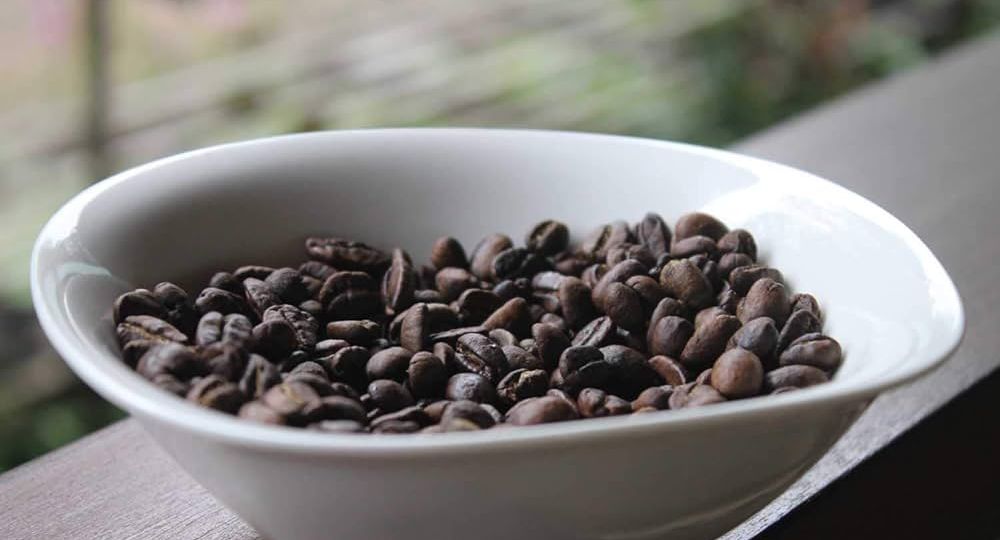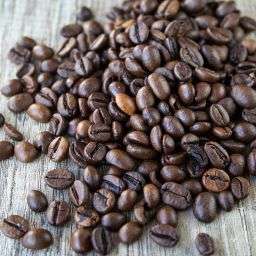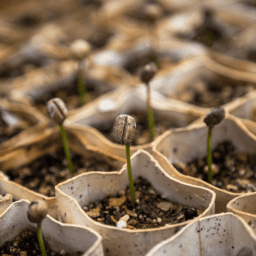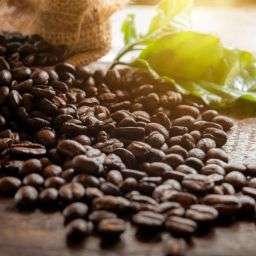
Coffee beans, in their raw, unroasted form, are seeds from the fruit of the Coffea plant. Before they become the aromatic, brown beans familiar to coffee enthusiasts worldwide, they are green, hard, and lacking the characteristic coffee smell.
A common inquiry among consumers involves the caffeine content of these raw beans. Caffeine, a stimulant affecting the central nervous system, is a significant factor for many coffee drinkers. It’s not just about the energizing effect; caffeine content influences flavor, bitterness, and even health benefits or side effects associated with coffee consumption.
What Are Raw Coffee Beans?
Definition and Types
Raw coffee beans are the unroasted seeds from the coffee cherry. Two primary species of coffee beans dominate the market: Arabica and Robusta. Arabica beans are known for their smoother, more complex flavor profiles, with a lower caffeine content than their Robusta counterparts. Robusta beans, on the other hand, offer a stronger, more bitter flavor and contain higher levels of caffeine. This distinction plays a crucial role in the beans’ taste, usage, and consumer preference.
Caffeine in Raw vs. Roasted Coffee Beans
The roasting process significantly impacts the flavor, aroma, and color of coffee beans; however, its effect on caffeine content is minimal. Raw coffee beans inherently contain caffeine, which remains relatively stable through the roasting process. Contrary to popular belief, the caffeine level in coffee beans does not significantly decrease upon roasting.
Therefore, the caffeine content in raw and roasted beans of the same variety stays largely consistent, though roasting can affect the bean’s density and, consequently, the measurement of caffeine by volume.
This stability means that whether in their natural green state or after undergoing roasting, the beans maintain their caffeine content. The key difference lies in the experience of consumption and the resulting beverage’s flavor profile. Arabica and Robusta beans, regardless of being raw or roasted, cater to varied palates and preferences, primarily dictated by their intrinsic caffeine concentrations.
Benefits of Raw Coffee Beans
Raw coffee beans are a powerhouse of antioxidants and beneficial compounds, including chlorogenic acid, which is known for its health benefits. These antioxidants can help neutralize harmful free radicals in the body, reducing inflammation and lowering the risk of chronic diseases.
Chlorogenic acid, specifically, has been linked to improved glucose metabolism, offering potential benefits for weight management and diabetes prevention. Moreover, the natural caffeine found in raw coffee beans provides an energy boost, enhancing alertness and concentration. This stimulant effect can also increase metabolic rate, potentially aiding in weight loss by boosting fat burning.
Potential Risks and Side Effects
Despite the health benefits, consuming raw coffee beans is not without risks. The high caffeine content can lead to overdose symptoms, including jitteriness, anxiety, heart palpitations, and insomnia. Additionally, the acidity of raw coffee beans may exacerbate digestive issues, such as acid reflux and stomach upset.
People with caffeine sensitivity or gastrointestinal conditions should be particularly cautious. To minimize risks, it’s recommended to consume raw coffee beans in moderation, paying attention to your body’s responses and considering any existing health issues.
Direct Consumption
Eating raw coffee beans directly can be an acquired taste due to their bitterness and hard texture. For those interested in trying, it’s advisable to start with small quantities to gauge your tolerance to the caffeine and acidity. Some people may appreciate the unique, earthy flavor profile of raw beans, which is distinct from that of brewed coffee. Chewing the beans slowly can release their nuanced flavors and provide a gradual caffeine boost.
Alternative Uses
For a more palatable experience, consider incorporating raw coffee beans into your diet through creative recipes. Grinding the beans into a fine powder allows for their addition to smoothies, energy bars, or even homemade chocolate for a crunchy texture and a coffee flavor kick. This method can mitigate the beans’ bitterness while still delivering their health benefits.
Additionally, raw coffee bean powder can be used as a seasoning for meats or added to baked goods, offering a unique flavor twist and an antioxidant boost to your meals.
Best Practices for Storing Raw Coffee Beans
To maintain the freshness and caffeine content of raw coffee beans, storing them properly is crucial. Keep them in an airtight container in a cool, dark place, away from direct sunlight and moisture. This method helps preserve their natural flavors and prevents the degradation of caffeine and essential oils. For longer-term storage, consider using vacuum-sealed bags to minimize exposure to air, further extending their shelf life without compromising quality.
Tips on Selecting High-Quality Raw Coffee Beans
When selecting raw coffee beans, look for beans that are uniform in size and color, as this indicates careful sorting and quality processing. Source beans from reputable suppliers who can provide information on the bean’s origin, variety, and processing method. Opt for beans grown in optimal conditions, typically at high altitudes and in rich, volcanic soil, to ensure a richer flavor profile and higher antioxidant content.
FAQs
How Much Caffeine is in a Raw Coffee Bean?
The caffeine content in a raw coffee bean varies between species, with Arabica beans containing about 1.2% caffeine by weight and Robusta beans about 2.2%. This translates to roughly 6 mg of caffeine in an Arabica bean and around 10 mg in a Robusta bean.
Can Eating Raw Coffee Beans Provide an Energy Boost?
Yes, eating raw coffee beans can provide an energy boost due to their caffeine content. The effect is more immediate and intense because the caffeine is absorbed faster when consumed in solid form.
Differences in Caffeine Content Between Arabica and Robusta Raw Beans
Arabica beans generally have less caffeine compared to Robusta beans. This difference affects not only the energy boost one might experience but also the taste and bitterness of the bean.
How Many Raw Coffee Beans is it Safe to Consume?
It’s generally safe for most people to consume up to 400 mg of caffeine per day. Given the caffeine content of raw beans, this would be about 40-50 Arabica beans or 20-25 Robusta beans. However, individual tolerance varies, and it’s important to consider your sensitivity to caffeine.
Conclusion
This article has explored the intriguing world of raw coffee beans, shedding light on their caffeine content, health benefits, risks, and culinary uses. We’ve discovered that raw coffee beans not only offer a unique taste experience but also provide health benefits from their high antioxidant and chlorogenic acid content. However, they carry risks associated with caffeine overdose and acidity, emphasizing the importance of moderation.
When storing and selecting raw coffee beans, proper practices ensure their longevity and quality, enhancing your coffee experience. The FAQs highlighted the key aspects of caffeine content, providing insights into how raw coffee beans can be a part of a healthy diet when consumed responsibly.
In conclusion, while raw coffee beans are a valuable source of caffeine and antioxidants, they should be enjoyed thoughtfully, with an appreciation for their unique characteristics and potential health implications. Whether you’re a coffee aficionado or simply curious about alternative ways to enjoy coffee, raw coffee beans









